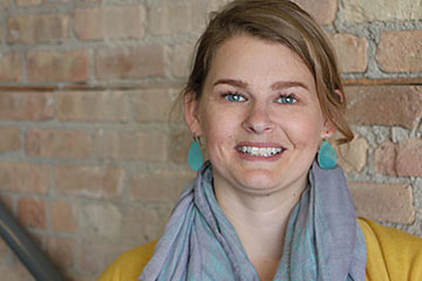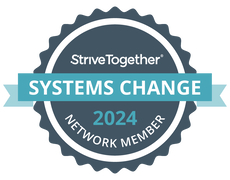|
Summer is a great opportunity for children to explore different educational fields they may enjoy and continue practicing what they know so that they’re prepared to enter school again in the fall. Kenosha County offers a variety of programs for all ages and interests so that students can continue growing as they enjoy their summer breaks. UW-Parkside has numerous summer programs for children so they stay academically driven while not attending school. Some of these include: Youth mindfulness—focused on helping students learn how to manage stress at a young age; lego robotics—for middle schoolers who want to learn more about the use of robotics; environmental explorers—a week long program for middle schoolers who want a hands on learning experience with the environment; codebreakers—a new summer program for students who want to get a grasp on the basics of coding; and many more. The City Park Alliance Program will be available again this summer at Lincoln park, now also offered at Wilson and Roosevelt. It is a free program offered to students ages six through 18. Lunch is served daily at 1:30pm and the program runs from 12-6pm Monday through Friday starting on June 18th and ending on the 24th of August. The City Park Alliance Program is hosted at the Lincoln Park Oribiletti Center. Daily activities can include: organized outside sports, arts & crafts, music, game room, educational activities, movies, and more. The Kenosha YMCA offers a summer day camp for children 5-15 years old that promotes a healthy mind, body, and spirit. Activities vary in the sciences, arts, athletics, and field trips. With their four values of Respect, Responsibility, Honesty and Caring - The YMCA promotes a positive and safe environment for children to grow while having fun. The camp includes a T-Shirt, breakfast, lunch, a snack, transportation and admission for most field trips, recreational rock climbing, swimming, and a lot of fun. They also offer Callahan Kids Camp for those K-6th grade, Camp Adventure for those in summer school, and Teen Scene camp for students in 7th-8th grade. The Boys & Girls Club of Kenosha has two different programs your child can participate in. for $60 a week Monday through Friday at 7am-5pm, students ages 6-12 can partake in the Summer AM Adventure Program for an assortment of activities both educational and recreational. They also have the Summer Quest Camp for members of the Boys & Girls Club ($20 per year per individual or $30 a year per family) where children ages 6-12 can look forward to different activities every week from 12-5pm. Some of these activities include gym, STEM programming, photography, game room tournaments, field trips, and more! How to get involved
 Article written by Megan Maurer Communication Intern Carthage College Published in Kenosha News With the success the Smart Beginnings Network has had in its first year, we are excited to add a dedicated staff member to lead this work! Lynn Debilzen joined the team in March as the Manager of Birth to 8 for both Building Our Future in Kenosha County and Higher Expectations in Racine County. Lynn is leading our Smart Beginnings and Early Grade Reading Networks. Lynn's background is in program management and child development. Prior to joining the team, Lynn worked for national nonprofits Bright by Three, Playworks, and Jumpstart. Lynn earned her MBA in Social Impact Management from Brandeis University, her MA from The University of Montana, and her BSW from the University of Wisconsin-Milwaukee. If you live in Kenosha and care about future generations, you should grab a copy of the Baseline Report 2017 that was released by a local non-profit, Building Our Future. Building Our Future is Kenosha County’s first cradle-to-career collective impact effort focused on education and workforce development. The baseline report is filled with information that measures success in school, utilizing testing results along with demographics. It’s also important to know that the measurement going forward will be the same so that comparisons to the baseline will show areas of progress or areas of decline. A report like this cuts several ways. It measures all students and then divides students up, depending on the color of their skin and if they come from an economically challenged environment. Here’s the problem, many people see the indicators and make them the problem rather than a measurement of the problem. When some read a report like this, they extend their own, personal beliefs and use the measurements to blame others or make excuses for inequities. We’ve heard the blame game many times: it’s the test’s fault, it’s the teacher’s fault, it’s the student’s fault, it’s the parent’s fault, it’s because they are black, it’s because they are white, it’s because they are poor, etc. Here is one example of the data: Third grade English/Language Arts (ELA): Measuring reading skills is important because research has shown that third-grade reading proficiency is linked to high school performance, graduation and college enrollment for Wisconsin students. In Kenosha County, about 45 percent of the students are meeting state ELA norms for third grade, and 67 percent of economically disadvantaged students are below proficient standards. When it comes to race, 56 percent of white students are proficient, 13 percent of black students are proficient, and 27 percent of Hispanic students are proficient. Did you just fall into the trap of casting your personal bias or beliefs on a group of students because of the way the measurement tool works? To be sure, when conclusions are drawn on the measurements instead of defining the real problem behind the measurement, polarization and lines in the sand are drawn and everyone starts pointing the finger at something or someone instead of digging deeper.  Editorial written by and published in The Kenosha News http://www.kenoshanews.com/opinion/data-and-the-blame-game/article_e55f32d7-b136-5a1f-a2df-e726f011bfdd.html |
Categories
All
Archives
May 2024
|



